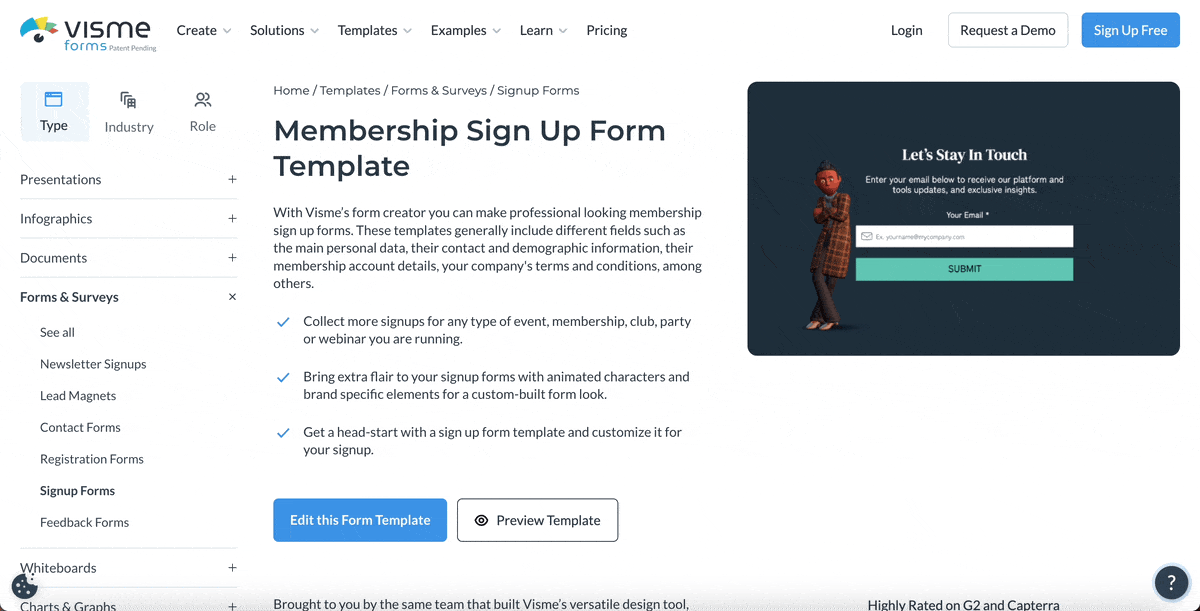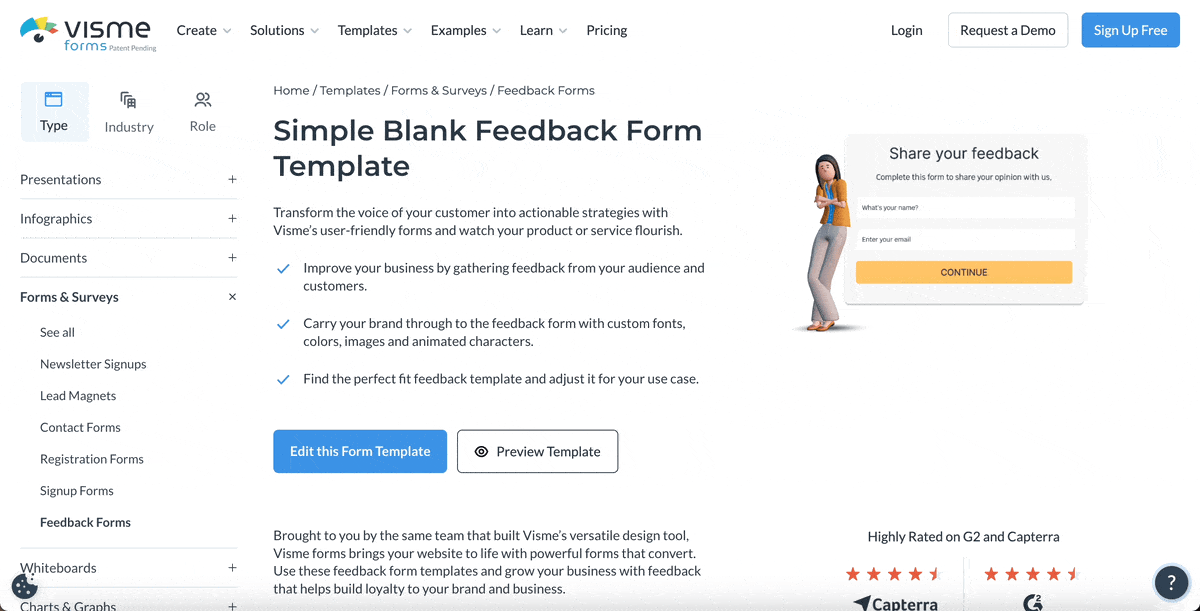
What Is Lead Management: A Complete Guide


Your business depends on leads. They are the foundation of your sales pipeline.
Without leads, your company will struggle to achieve any kind of revenue, growth or success.
But simply having leads isn't enough. You also need a process to organize, prioritize and nurture those leads. In other words, you need a lead management strategy.
But what exactly is lead management? What are the different types of leads, and how do you guide them through the sales funnel?
In this guide, you’ll learn all about lead management. We'll explore the benefits it brings to your business, break down its key stages, and share best practices and tools to help you successfully generate, engage and convert leads into customers.
Lead management is the process of capturing, qualifying and nurturing potential customers (or leads) until they're ready to buy.
It's about leveraging data to attract the right prospects, understand their needs, deliver targeted engagement, follow up at the right time and distribute opportunities among your sales team effectively. Ultimately, the goal is to streamline your sales process and convert more leads into paying customers.
Sure, you can just go with the flow and cater to leads as they come. But having a proper lead management process in place can benefit your business in more than one way. Here’s why you need to sit down with your sales team and create a plan for managing leads effectively:
There are various types of leads you’ll deal with in your lead management system. It’s important to organize and prioritize them based on factors like interest and qualification levels.
Here are the main types of leads your business might encounter:
Lead management is a cyclical process that consists of 7 key stages:
Made with Visme Infographic Maker
Let’s explore each of those stages in more detail below.
Lead generation is the process of attracting and capturing interest from your target audience, usually by enticing them to provide their contact information in exchange for a resource.
It’s the first step in filling your sales pipeline with potential customers. Without lead generation, you won’t have any leads to nurture and manage.
Here are some ways to generate leads, depending on your industry and audience:
Remember, the key to lead generation is to offer genuine value. Whether it's through informative articles, engaging social media content or compelling lead magnets, your goal should be to provide insights and solutions that resonate with your target audience's needs and pain points.
Optimizing your lead capture process is just as important as driving traffic. Ensure your landing pages, forms and calls-to-action (CTAs) are clear, actionable and user-friendly. Experiment with different designs, messaging and offers to find out what yields the highest conversion rates.
Pro Tip: Capture more leads with Visme’s online form builder. Create high-converting, interactive forms using tools like custom branding and animated characters. Connect your forms to your favorite apps, track form analytics and share or embed your forms anywhere easily.With all those leads pouring in, you now need a system in place to differentiate between them. Lead segmentation is the process of dividing prospects into distinct groups based on specific characteristics, behaviors or needs.
For example, you can create separate lists based on where your leads are coming from.
This will help you prioritize your lead nurturing efforts and tailor your messaging to resonate deeply with each group’s unique needs.
For example, you could follow up with leads who contacted support by asking about their experience or if they need assistance with anything else. To leads who downloaded an ebook, you could send additional resources they might be interested in or even a pitch to help solve a problem.
B2B companies can also segment their leads based on factors like industry, company size, decision-maker role or funnel stage. For B2C brands, factors like buyer demographics, past purchases or browsing history might be more relevant.
Dig into the data in your CRM and marketing automation platforms to create granular segments. Then analyze how different segments interact with your website and content, and look for patterns or shared characteristics between leads.
Pro Tip: Track analytics right inside Visme when sharing lead magnets or forms with potential customers. Keep tabs on views, downloads, engagements, time spent on page and other metrics that can help you segment your leads and send tailored messages.Generating a high volume of leads is great, but if those leads aren't a good fit for your business, you're wasting valuable time and resources. That's where lead qualification comes in—the process of determining how likely a lead is to become a customer based on set criteria.
But the definition of what makes a lead “qualified” can vary from business to business. One way to qualify leads is to follow the BANT framework:
If a lead doesn’t meet your set criteria, they’re “unqualified”, meaning they’re not a good fit for your business and are not likely to convert even with your best nurturing and sales efforts. The level of qualification may also vary, as discussed above. A lead can be Information Qualified, Marketing Qualified, Sales Qualified or Product Qualified.
Your marketing and sales teams need to work together to gather this qualifying information. Start by asking key questions on your lead capture forms. For example, a B2B software company might ask about company size, role and current software stack.

As leads progress through the funnel, use additional touchpoints like surveys or phone calls to further qualify their fit and readiness. Remember, qualification is an ongoing process. As you learn more about a lead over time, their qualification status may change.
The reality of sales is that most leads aren't ready to buy right away. They need time to research, compare options and build trust in your brand.
Lend them a hand with lead nurturing campaigns that aim to educate, engage and guide prospects down the funnel, taking them from initial interest towards making a purchase.
Lead nurturing is best done with relevant, valuable content mapped to each stage of the buyer’s journey. This includes:
Make sure your lead nurturing campaigns are spread across multiple channels and are personalized to each potential customer. Doing this manually can be hard, but this is why you have marketing automation software to help.
Finally, lead nurturing doesn’t end at purchase. It continues beyond the conversion stage where brands work on maintaining customer relationships and encouraging loyalty, repeat purchases and positive word-of-mouth.
Not all leads are ready for sales outreach, and not all sales-ready leads should go to the same rep. That's where lead scoring and routing come into play.
Lead scoring is the process of assigning values to each lead based on various factors, such as the level of interest they’ve shown, their interactions with your brand and how well they match your sales ICP.
For example, a lead who works in your target industry might receive 10 points, while a lead who downloads a pricing guide might receive 15 points.
Work with your team to define what constitutes a sales-ready lead and establish scoring thresholds that trigger a handoff from marketing to sales.
Once a lead hits that threshold, lead routing ensures it gets assigned to the right rep. You might distribute leads based on geographic location, product type, company size or other criteria that align with your sales team's structure.
Pro Tip: Use your marketing automation or CRM system to set up automatic routing rules so hot leads are instantly assigned to the appropriate rep or queue.The conversion stage is where all your hard work in generating, nurturing and qualifying leads pays off. It's the moment of truth when a prospect decides whether or not to make a purchase.
More than that, it’s an opportunity to lay the foundation for a long-term customer relationship. By providing a smooth, positive sales experience and delivering on your promises, you can turn a one-time buyer into a loyal, repeat customer and even a brand advocate.
Of course, not every lead will convert on the first attempt. Some may need more time, more information or more convincing before they're ready to buy. That's where follow-up comes in.
Send timely, relevant and persistent follow up messages to keep your brand top-of-mind. Train your reps to actively listen, ask thoughtful questions and provide helpful guidance rather than just going for the hard sell.
Here’s a sales playbook template you can customize to keep your sales team aligned with ICP data, best practices and examples of how to respond in specific scenarios:
Remember to respect your lead’s time and interest. Vary your contact attempts across channels—if an email goes unanswered, try a LinkedIn message. If a lead goes cold, re-engage them later with a new piece of content or offer.
This is also where conversion rate optimization (CRO) tactics can be helpful. Analyze why leads are not converting and where they’re dropping off, and pinpoint areas for improvement.
Maybe you need to streamline your checkout process. Perhaps you need better CTAs. Or maybe your forms are too long. Continuously test and optimize different aspects of your sales process to convert more leads over time.
Lead management is not a set-it-and-forget-it practice. To truly maximize your results, you need to continuously measure, analyze and optimize your approach at every stage of the funnel.
Establish clear KPIs for each phase of your lead management process. These might include metrics like:
Look at how leads from different sources progress through the funnel. Identify key conversion points and look for stages where leads tend to stall or drop off. Analyze the performance of different lead segments to see which are most likely to convert.
This data will give you a starting point for optimization. For example, if you find you’re not generating enough leads from social media, you might want to adjust your strategy there.
Or if certain segments are converting at a higher rate, you may want to double down on attracting similar leads. Creating Ideal Customer Profiles (ICPs) or buyer personas can help you target the right audience. Here’s a template you can customize right away:
Of course, quantitative data only tells part of the story. Regularly ask for feedback from your sales team. What objections are they hearing from leads? What content or talking points are resonating? What could marketing do to better support their efforts?
Similarly, seek input from your customers. What made them choose your solution? What almost prevented them from buying? Use Visme’s feedback forms to make it easy for customers to share their thoughts and experiences.

Use this data to continually optimize and test every aspect of your lead management process. A/B test different landing pages, form fields or lead magnets. Experiment with different segments or scoring models. Tweak your nurturing sequences and sales scripts based on engagement data and feedback.
Lead management can help your business in many ways, from driving sales and profits to supporting business growth. But to truly get the most out of your lead management strategy, keep the following the tips and best practices in mind:
Managing leads can be difficult without the right software under your belt. Here are three of the best lead management software to help you streamline and optimize your sales process:

HubSpot is an all-in-one lead management software that seamlessly integrates marketing, sales and customer service. With features like lead capture forms, behavioral tracking and automatic lead scoring, HubSpot makes it easy to attract, organize and nurture your leads.

Plus, the platform's robust marketing automation features allow you to create personalized, multi-channel campaigns that guide leads through the funnel. And with built-in analytics and reporting, you can track your lead management performance and make data-driven decisions.

Salesforce is a cloud-based CRM giant that offers a full suite of lead management tools. You can capture leads from multiple sources, automatically route them to the right reps and track their journey through the sales funnel.

The platform's Einstein AI technology provides intelligent lead scoring and insights to help you focus on the best opportunities. Moreover, Salesforce's customizable dashboards and reports give you real-time visibility into your lead management metrics, and its extensive app marketplace allows you to integrate with your favorite tools (including Visme!)

Zoho CRM is a flexible lead management software that punches above its weight. With tools for lead generation, segmentation, scoring and nurturing, the platform helps you efficiently manage your leads from first contact to close.

Track real-time alerts on lead behavior so your sales team can reach out at the perfect moment. Zoho CRM's Zia AI assistant also offers predictive lead scoring and intelligent workflow suggestions. Finally, the platform offers extensive integrations and customization options, which means you can tailor it to your unique business needs.

While Visme isn’t exactly a lead management tool, it can help you create all kinds of engaging content to attract, nurture and manage leads. Design eBooks, whitepapers, reports, blog graphics, social media posts, infographics, case studies, webinar presentations, lead magnets, forms and more quickly and easily.

You can also create training programs for your sales teams. Take advantage of training presentation templates, video creation tools and interactivity support, and export materials in SCORM or xAPI to seamlessly incorporate into your Learning Management System (LMS.)
Best of all, use Visme’s Salesforce and HubSpot integration to streamline your lead management process and convert more customers. Sync files and projects between your CRM and content creation tool, and have your team work collaboratively and faster.
Lead generation is the specific process of attracting and capturing leads, while lead management is the overall process of generating, organizing and nurturing leads to conversion.
A lead is a potential customer who has shown interest in your product or service, while an opportunity is a lead that has been qualified as having a high likelihood of becoming a paying customer based on specific criteria.
A lead is a potential customer who has shown interest but hasn't yet made a purchase, while a customer is someone who has already bought your product or service.
A sales lead is a person or business who may eventually become a paying customer. Sales leads are potential customers who have shown interest in your product or service through actions like visiting your website, filling out a form or engaging with your content.
The lead lifecycle typically includes the following stages: visitor, lead, opportunity, customer and advocate. The exact stages may vary depending on your company and industry.
Lead management can help you attract, nurture and convert more leads faster. Ultimately, it plays a big role in growing your business and boosting your bottom line.
While Visme may not be a traditional lead management platform, it's a powerful tool for creating engaging content and forms to capture, educate and convert leads.
With Visme, you can easily design eye-catching infographics, presentations, videos and lead magnets that set you apart and build trust with your leads. Create visual content for every stage of the funnel and empower your team with training and sales enablement content.
Finally, our form builder lets you build interactive, no-code forms customized to your branding. Grab attention and capture more visitors by adding animated characters to your forms.
Sign up for a free Visme account to get started today. Or find out more about how Visme can help sales and marketing teams improve their workflows.
Improve your data collection from emails, leads, to surveys and more, by using beautifully designed forms that convert up 2X better.
Signup Free